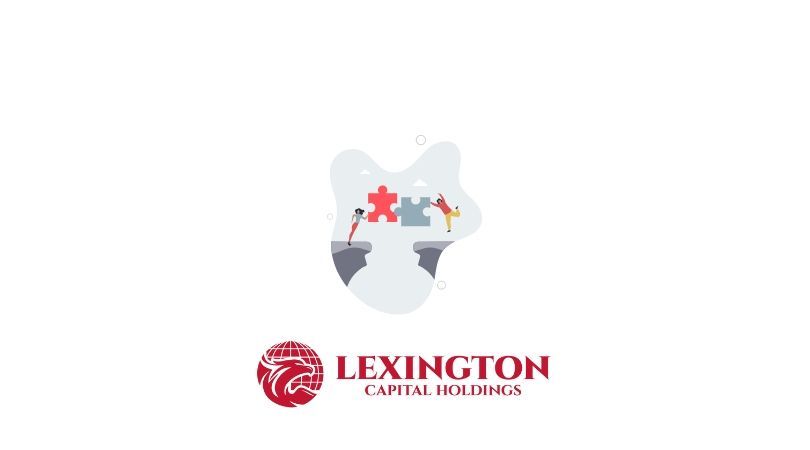Alternative Lending and the COVID-19 Pandemic

Alternative Lending and the COVID-19 Pandemic
The COVID-19 pandemic has had a significant impact on businesses of all sizes. Many businesses have been forced to close or reduce their operations, which has led to a decline in revenue and profits. This has made it difficult for businesses to access traditional financing, such as bank loans.
Alternative lending has emerged as a valuable source of financing for businesses during the COVID-19 pandemic. Alternative lenders typically use a variety of factors to assess a business's creditworthiness, such as its cash flow, its business model, and its management team. This can make it easier for businesses to get the financing they need, even if they don't have a good credit score or collateral.
There are a number of different types of alternative lending products that can be used by businesses during the COVID-19 pandemic. For example, businesses can use alternative lending to finance:
Working capital. This can help businesses cover the cost of payroll, rent, and other expenses.
Equipment purchases. This can help businesses purchase new equipment or upgrade existing equipment.
Business expansion. This can help businesses expand their operations or enter new markets.
Debt consolidation. This can help businesses combine multiple debts into a single loan with a lower interest rate.
Alternative lending can be a valuable tool for businesses that are struggling to get financing during the COVID-19 pandemic. By providing flexible financing options, alternative lenders can help businesses stay afloat and continue to operate.
Here are some specific examples of how alternative lending has helped businesses during the COVID-19 pandemic:
A small restaurant that was struggling to stay afloat due to the decline in dine-in traffic was able to get an alternative loan to finance working capital. This allowed the restaurant to cover its payroll and other expenses and to stay open.
A retail store that was forced to close its physical location due to the pandemic was able to get an alternative loan to finance the cost of setting up an online store. This allowed the store to continue to sell its products and to generate revenue.
A construction company that was facing a decline in new projects was able to get an alternative loan to finance the cost of equipment purchases. This allowed the company to stay competitive and to continue to operate.
These are just a few examples of how alternative lending has helped businesses during the COVID-19 pandemic. As the pandemic continues, alternative lending is likely to play an increasingly important role in helping businesses stay afloat and continue to operate.
In addition to providing flexible financing options, alternative lenders have also adapted their lending practices to meet the needs of businesses during the COVID-19 pandemic. For example, many alternative lenders have reduced their interest rates and fees, and they have also made it easier for businesses to apply for loans.
The COVID-19 pandemic has been a challenging time for businesses, but alternative lending has emerged as a valuable source of financing. By providing flexible financing options and adapting their lending practices, alternative lenders have helped businesses stay afloat and continue to operate.

When you apply for business funding, your application goes through a critical stage—underwriting. This is where lenders evaluate risk and determine whether your business qualifies for financing, and under what terms. Understanding what underwriters look for can help you strengthen your application, avoid delays, and increase your approval odds.

Not every business enjoys a steady stream of income. For many companies—especially those in seasonal industries, contracting, or project-based work—revenue can shift dramatically from month to month. These ups and downs are normal, but they can make managing cash flow, payroll, and operating expenses challenging. At Lexington Capital Holdings, we understand that fluctuating revenue doesn’t mean instability—it just means you need the right financial tools to stay balanced and grow confidently.

The Challenge of Hyper-Growth For many startups, growth isn’t the problem—it’s managing it. Rapid scaling demands capital for hiring, marketing, technology, and operations. But too often, founders find themselves cash-strapped right when they need resources the most. Choosing the right financing strategy can be the difference between sustainable growth and burning out too soon.

When it comes to business financing, the terms you secure are just as important as the funding itself. Lower interest rates, flexible repayment schedules, and higher approval amounts can mean the difference between simply surviving and setting your business up to thrive. The good news? Business owners often have more negotiating power than they realize. At Lexington Capital Holdings, we’ve seen firsthand how preparation and strategy can help secure stronger terms. Here’s how you can do the same:

For many businesses, waiting on customer payments can feel like standing still when you’re ready to move forward. Delayed invoices, extended payment terms, or slow collections create cash flow gaps that make it harder to cover expenses, pay employees, or seize new opportunities. The truth is—even successful, profitable companies face this challenge. The key isn’t avoiding it, but managing it strategically with the right funding solutions

Securing business funding is a milestone—but the real impact comes from how you put that capital to work. Every dollar borrowed should fuel momentum, strengthen operations, and generate measurable returns. Unfortunately, too many businesses stop at “getting approved” and miss the chance to maximize their return on investment (ROI). At Lexington Capital Holdings, we believe funding isn’t just about access to capital—it’s about creating opportunity. Here’s how to ensure your financing delivers the highest ROI:

In today’s fast-paced business environment, standing out from the competition requires more than just great products and services—it takes strategy, timing, and smart financial decisions. One of the most overlooked tools in building and maintaining a competitive advantage is business financing. When leveraged correctly, financing doesn’t just help you “get by”; it can actually position your business to outpace competitors and capture new opportunities.

In business, surprises aren’t a matter of if—they’re a matter of when. Whether it’s a sudden equipment breakdown, an unexpected dip in sales, or a market shift that requires quick adaptation, unforeseen expenses can test even the most successful companies. The difference between thriving and struggling often comes down to how well you’ve prepared.

When most business owners hear the word debt, it sparks feelings of stress or risk. But here’s the truth—debt isn’t always a bad thing. In fact, when managed strategically, debt can become one of the most powerful tools to grow, stabilize, and scale your business. At Lexington Capital Holdings, we work with business owners every day who are navigating this very question: Is taking on debt the right move for me? Let’s break down the difference between “good” and “bad” debt so you can make informed financial decisions.

In today’s business world, financing options are everywhere—but choosing the right path can feel overwhelming. From traditional bank loans to alternative lending solutions, the fine print and fast-changing requirements often leave business owners spending more time deciphering funding terms than actually running their businesses. That’s where the value of a dedicated funding advisor truly shines. At Lexington Capital Holdings, we’ve seen firsthand how personalized guidance can transform the funding experience for business owners of all sizes.

